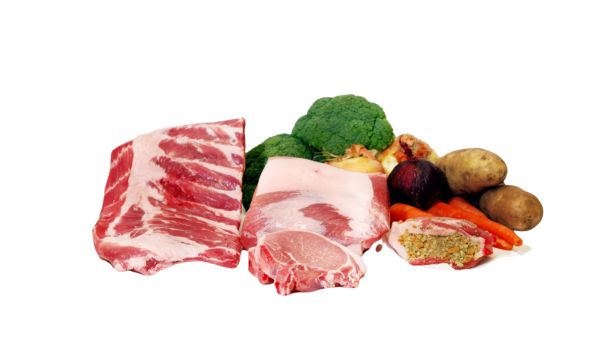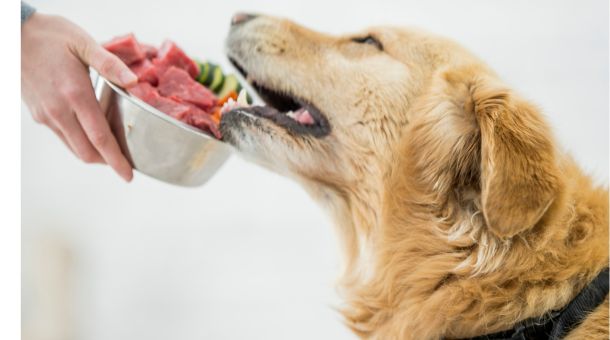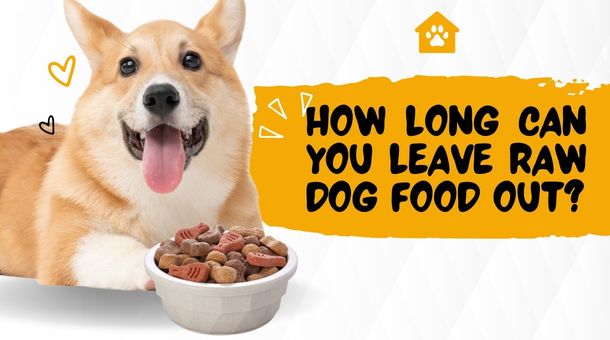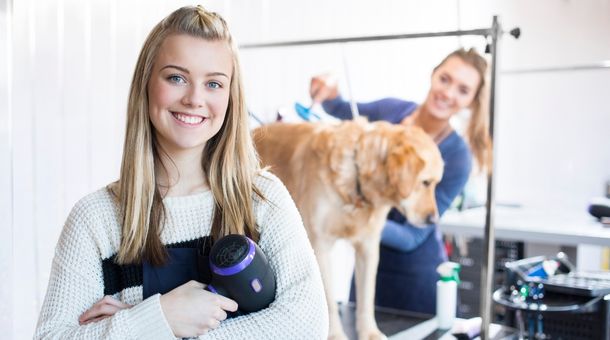If you’re a pet owner who feeds your dog a raw food diet, you may wonder how long it’s safe to leave the food out before it goes bad. It’s important to understand the risks of leaving raw dog food out for too long and the best practices for storing and handling it. T
his article will explore the topic in-depth and provide helpful tips and guidelines to ensure your furry friend stays healthy and happy.
How Long Can You Safely Leave Raw Dog Food Out?

Raw dog food is a popular feeding option for many pet owners, but it’s important to handle it safely to avoid potential health risks for your furry friend. When it comes to leaving raw dog food out, the consensus is that it should not be left at room temperature for more than 2 hours.
After this time, harmful bacteria can grow, increasing the risk of food poisoning and other health issues.
Raw Dog Food: How Long Before It Goes Bad?
Raw dog food is a popular feeding option for many pet owners, as it can provide various health benefits for dogs. However, it’s important to handle raw dog food safely to prevent the risk of bacterial contamination and foodborne illness.
Regarding how long raw dog food can be safely stored, it’s recommended to be consumed or frozen within 2-3 days of purchase or preparation. After this time, harmful bacteria can grow and multiply, increasing the risk of illness for your furry friend.
The Risks of Leaving Raw Dog Food Out for Too Long
Leaving raw dog food out for too long can pose several health risks for your furry friend. When raw food is left at room temperature for an extended period, harmful bacteria can grow and multiply, increasing the risk of foodborne illness.
This can cause a range of symptoms in your dog, including vomiting, diarrhea, and lethargy, and in severe cases, it can even lead to hospitalization. In addition to the risk of illness, leaving raw dog food out for too long can also result in nutrient loss and spoilage, which can be detrimental to your dog’s health.
Storing Raw Dog Food: Tips to Ensure Your Dog’s Health

Storing raw dog food properly is crucial to ensuring your furry friend stays healthy and happy. Raw dog food can be prone to bacterial contamination and spoilage, posing a risk to your dog’s health.
To keep your dog safe, following a few key tips when storing raw dog food is important. These include using airtight containers to prevent air exposure, storing the food in the fridge or freezer to keep it at a safe temperature, and being mindful of the expiration date. This article will explore these and other important tips to help you store raw dog food properly and keep your pup healthy.
Is it Safe to Leave Raw Dog Food Out Overnight?
Leaving raw dog food out overnight is not recommended, as it can pose health risks to your furry friend. Raw dog food should not be left at room temperature for more than 2 hours to prevent bacterial growth and potential foodborne illness.
Leaving it out overnight increases the risk of bacterial contamination and spoilage, leading to your dog’s illness and other health issues.
It’s important to store raw dog food properly in the fridge or freezer to keep it fresh and safe for your pup. In this article, we’ll discuss the risks of leaving raw dog food out overnight and provide tips on how to store it safely.
The Dos and Don’ts of Storing Raw Dog Food. bullets

Here are some dos and don’ts to follow when storing raw dog food:
Dos:
- Use airtight containers to prevent air exposure
- Store the food in the fridge or freezer to keep it at a safe temperature
- Keep the feeding area clean to prevent cross-contamination
- Use separate utensils and cutting boards for raw dog food and human food
- Thaw frozen food in the fridge or microwave before feeding
- Follow proper hygiene practices when handling the food
Don’ts:
- Leave raw dog food out at room temperature for too long
- Refreeze thawed food
- Mix old and new batches of raw dog food
- Use plastic bags or containers that are not specifically designed for food storage
- Overfeed your dog, as uneaten food can quickly spoil and pose a health risk
Can you mix Raw and cooked dog food?
While it is possible to mix raw and cooked dog food, it is generally not recommended as they have different nutritional requirements and can potentially lead to digestive issues for your dog.
Raw dog food is often high in protein and fat, while cooked dog food is usually lower in these nutrients and contains more carbohydrates. Mixing the two types of food can lead to imbalances in your dog’s diet, which can cause digestive issues such as diarrhea, vomiting, and an upset stomach.
If you choose to mix raw and cooked dog food, it’s important to do so in moderation and ensure that the proportions of each type of food are appropriate for your dog’s needs.
It’s also a good idea to consult your veterinarian or a veterinary nutritionist to determine the best diet for your furry friend. Ultimately, feeding raw and cooked dog food is recommended separately to ensure your dog receives a well-balanced and nutritious diet.
What are the signs of spoiled raw dog food?
Sure, here are the signs of spoiled raw dog food in bullet points:
- A sour or rancid smell
- Slimy or tacky texture
- Discoloration, such as a change in color or the presence of mold
- The presence of visible bacteria or parasites
- An off or unpleasant taste, if you happen to try a small portion
If you notice any of these signs, do not feed the food to your dog, as it could pose a serious health risk.
Discard the food immediately and thoroughly clean and sanitize any surfaces or containers that may have come into contact with the spoiled food. Review your storage and handling practices to prevent the spoilage of future batches of raw dog food.
Can you store Raw dog food and kibble together?
Storing raw dog food and kibble together is not recommended, as they have different storage requirements.
Raw dog food should be stored separately in the fridge or freezer to prevent cross-contamination. Kibble should be stored in a cool, dry place, away from direct sunlight and heat sources.
Storing raw dog food and kibble together can increase the risk of contamination and spoilage and lead to a potential imbalance in your dog’s diet.
Raw dog food should always be handled and stored separately from other foods, including kibble, to prevent the spread of harmful bacteria and ensure your pet’s safety.
Should dogs eat Raw meat every day?
Whether dogs should eat raw meat every day or not depends on their individual needs and dietary requirements.
While raw meat can be a valuable source of protein and other nutrients for dogs, it should be fed in moderation and as part of a well-balanced diet.
Feeding your dog a raw meat diet requires careful consideration of their nutritional needs and proper handling and storage practices to prevent the risk of bacterial contamination.
Raw meat diets can be beneficial for some dogs, but they are not suitable for all dogs, and it’s important to consult with a veterinarian or a veterinary nutritionist before making any changes to your dog’s diet.
In general, it’s recommended to feed your dog a variety of high-quality protein sources, including both raw and cooked meat, to ensure they get all the essential nutrients they need.
The exact amount and frequency of raw meat in your dog’s diet will depend on their needs, so it’s important to work with your veterinarian to determine the best feeding plan for your furry friend.
Which Raw meat is best for dogs?

Here are some of the best types of raw meat for dogs:
- Beef
- Chicken
- Turkey
- Lamb
- Bison
- Venison
- Duck
- Rabbit
- Salmon
- Sardines
When feeding raw meat to your dog, it’s important to choose high-quality, fresh meat and to follow proper storage and handling practices to ensure the safety and nutritional value of the food.
Additionally, it’s important to balance your dog’s raw meat diet with other foods, such as fruits and vegetables, to ensure they get all the necessary nutrients. Consulting with a veterinarian or a veterinary nutritionist can help you determine the best raw meat diet for your dog’s needs.
Can dogs eat Raw eggs?
Yes, dogs can eat raw eggs as long as they are fresh and served in moderation. Raw eggs are an excellent source of protein and other essential nutrients for dogs, but they should not be the only source of nutrition in their diet.
There is a slight risk of bacterial contamination when feeding raw eggs, so it’s important to ensure they are fresh and from a reputable source. Additionally, dogs with certain health conditions, such as pancreatitis, may be unable to tolerate raw eggs and should avoid them.
It’s also important to note that feeding your dog raw egg whites can interfere with their digestion and absorption of biotin, a B vitamin, so it’s best to serve the whole raw egg or cooked eggs to your dog to ensure they are getting all the nutrients they need.
As with any new food, it’s important to introduce raw eggs to your dog’s diet slowly and in small amounts to ensure they tolerate it well. If you have any concerns about feeding raw eggs to your dog, it’s best to consult with a veterinarian or a veterinary nutritionist.
Conclusion
storing raw dog food properly is essential for ensuring the health and well-being of your furry friend. Raw dog food can spoil quickly if not stored correctly, leading to foodborne illnesses and other health issues.
To store raw dog food safely, keep it refrigerated or frozen at all times, use airtight containers, and avoid storing it with other foods, such as kibble. Additionally, it’s important to be aware of the signs of spoiled raw dog food and dispose of them immediately if you notice any of these signs. Following these dos and don’ts of storing raw dog food can help keep your pet healthy and happy.




